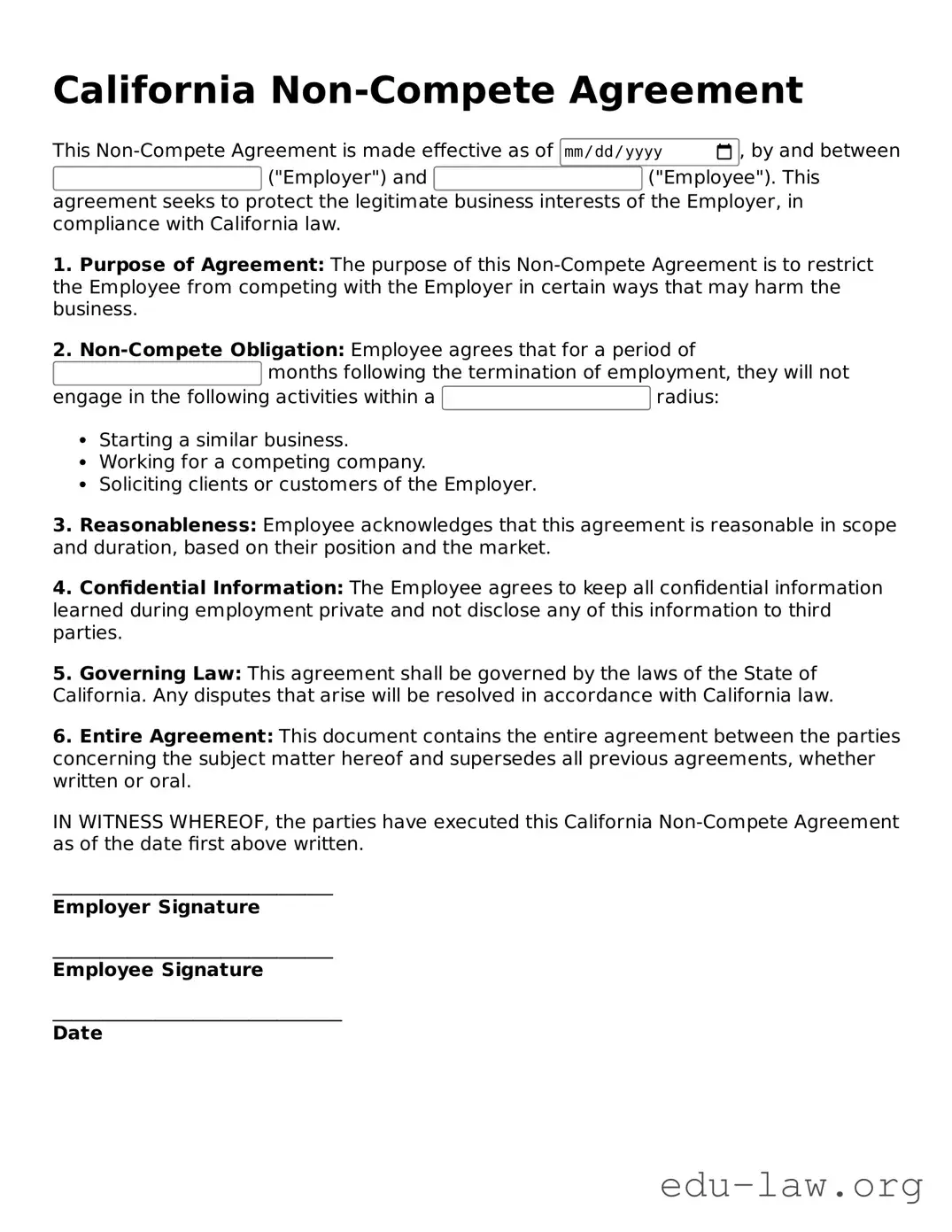Legal Non-compete Agreement Template for California
A California Non-compete Agreement form is a legal document designed to restrict individuals from engaging in competitive activities after leaving a job. These agreements aim to protect a company's trade secrets and proprietary information. However, California law generally limits the enforceability of such agreements, emphasizing employee mobility and freedom to work.
